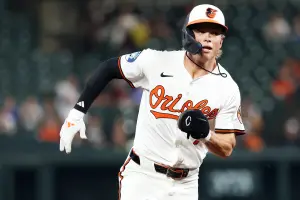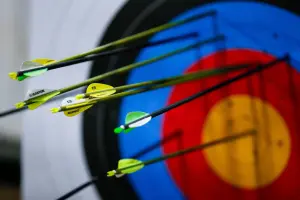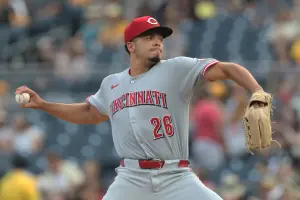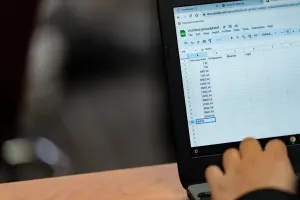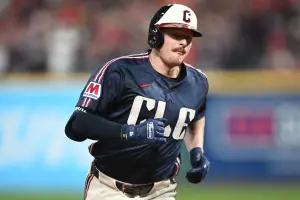
(*) ROTISSERIE: A contrarian approach to draft day
Steve Gardner of USATODAY.com will share his insights with BaseballHQ.com periodically this season.
If there’s a way to measure player performance, you can bet there’s a stat to analyze it.
All those numbers and their corresponding acronyms can make preparing for a simple fantasy baseball draft almost overwhelming—especially when we’re on the clock and our next pick is due in 10 seconds. There’s still a way to gain an edge on your competition. But it doesn’t come with more information. The edge now comes by playing the game better. Don’t try to outwork your opponents, out-think them.
Yes, that’s easier said than done. But if everyone has access to the same ADPs and projections systems, what makes any one person more likely than the others to win a title? My approach to drafting has evolved from a preplanned strategy to one that’s much more fluid—and more contrarian.
1. Build a team from the bottom up
So much attention is paid to the high-priced, early-round players who comprise a fantasy team’s foundation. Do I dare draft a starting pitcher in the first round? Should I prioritize speed early because of the scarcity of stolen bases? What positions should I target with my first three picks? Many wasted hours are spent obsessing over the optimal draft spot… and whether it’s better to start off with Max Scherzer/Andrew Beinitendi or Aaron Judge/Justin Verlander.
The truth is, it just doesn’t matter. You can win with just about any combination. Players in the first and second rounds—even those in the Top 50-100—are extremely good players. Unless they get injured, they’re not the ones who are going to make or break your season.
I was fortunate last season to get Christian Yelich in NL Tout Wars as my third $30+ hitter. He returned even more value by hitting .326 with 36 homers, 118 runs scored, 110 RBI, and 22 steals on his way to earning MVP honors. But I wouldn’t have won the league if it hadn’t been for the supporting cast around him: Brian Anderson for $7, Hunter Renfroe for $3, Walker Buehler for $6, and Josh Hader for $4. Not all late-round or inexpensive picks will pan out, but hit on just a few of them—and your top picks just do what they’re supposed to—then you have a pretty good shot at fielding a competitive team.
If you’re going to spend time doing research, use it to identify lesser-known players your favorite metrics indicate may outperform expectations. In other words, find players you want to target late – then reverse-engineer your draft to make sure you’re covered elsewhere. If that sounds familiar, it’s what many projections systems do with batted ball data to calculate expected batting average, slugging percentage, etc.
2. Embrace risk… to a point
Another way to differentiate your team from the rest of the pack is by taking calculated gambles. A player who falls to too far down the draft board because of health concerns or because he’s a drain on batting average eventually becomes worth the risk.
For example, Michael Conforto, Marcus Semien, and Daniel Murphy all began last season with varying degrees of injury issues. Fantasy owners who took advantage of their discounted prices were rewarded with above-average production once they returned.
On the other hand, Josh Donaldson had health problems of his own last spring and never really recovered. After changing teams (and leagues) this offseason, he’s one of those high-risk, high-reward players again in drafts.
Occasionally going out on a limb gives a fantasy team an opportunity to gain an advantage over the rest of the league. However, it’s important to pick your spots, because a team that takes on too much risk will inevitably crumble.
How much risk too much? It depends on the depth of the free agent pool, but I like taking a shot on a couple players in every draft (ideally one hitter and one pitcher) who’ve been overly discounted. Get one or more right and you’re in business.
3. Read the room
Knowledge of the player pool is essential, but sometimes knowing the people you’re competing against can be even more important. You don’t have to be able to read other people’s minds (although it would definitely help), you only need to be aware of the surroundings.
In drafts, be aware of where you’re picking in relation to potential position runs. And plan when you’re going to target your favorite sleeper picks.
In auctions, see who’s bidding aggressively and who’s waiting until the last instant. Always be aware of where the other owners stand in terms of their budgets and open roster spots.
As Yogi Berra once said, “You can observe a lot by watching.”
4. Have a backup plan
Every draft is different, so be prepared for odd twists and turns. In AL LABR, for example, starting pitchers and shortstops were more expensive than usual. In NL LABR, owners paid handsomely for speed.
When something unexpected happens in the middle (or even at the beginning) of a draft, it may signal it’s time to change course. Diverting from your original plan is not admitting failure, especially when it leads to an even better plan.
Scratch Pad All-Stars
Enough about game theory, you say. Which players will be difference-makers this season?
At every draft, I have what I call a "scratch pad" handy to help remember players (typically those outside the Top 200 or so) who can provide significant impact in certain categories. On last year's scratch pad, Mallex Smith and Tim Anderson were among the speed picks. José Martínez, Gleyber Torres, and David Dahl were on the impact hitter list. Matt Chapman, Hunter Renfroe, and Joc Pederson were among my late power prospects. And Mike Clevinger, Miles Mikolas, and Eduardo Rodriguez were tabbed as potential bargain pitchers.
On this year’s scratch pad, here are the players who interest me the most:
Speed: Kevin Kiermaier, Kevin Pillar, Garrett Hampson, Cedric Mullins, Roman Quinn
Potential impact hitters: Domingo Santana, Austin Meadows, José Martínez, Nick Senzel, Kyle Tucker, Keston Hiura, Francisco Mejía
Late power sources: Jay Bruce, Luke Voit, Ian Happ, Justin Bour, Maikel Franco, Miguel Sanó, Mark Trumbo, Pete Alonso, Marcus Semien
Potential bargain pitchers: Tyler Glasnow, Joe Musgrove, Ross Stripling, Alex Reyes, Collin McHugh, Joey Lucchesi, Freddy Peralta, Jesús Luzardo, Drew Pomeranz, Trevor Richards, Domingo Germán
Potential closers-in-waiting: Ryan Pressly, Sergio Romo, Blake Parker, Mark Melancon, A.J. Minter, Ryan Brasier, Joe Jiménez, Anthony Swarzak
Injury discount: Clayton Kershaw, Gregory Polanco, Jimmy Nelson, Miguel Sanó, Brandon Morrow, Didi Gregorius, Carlos Martínez


